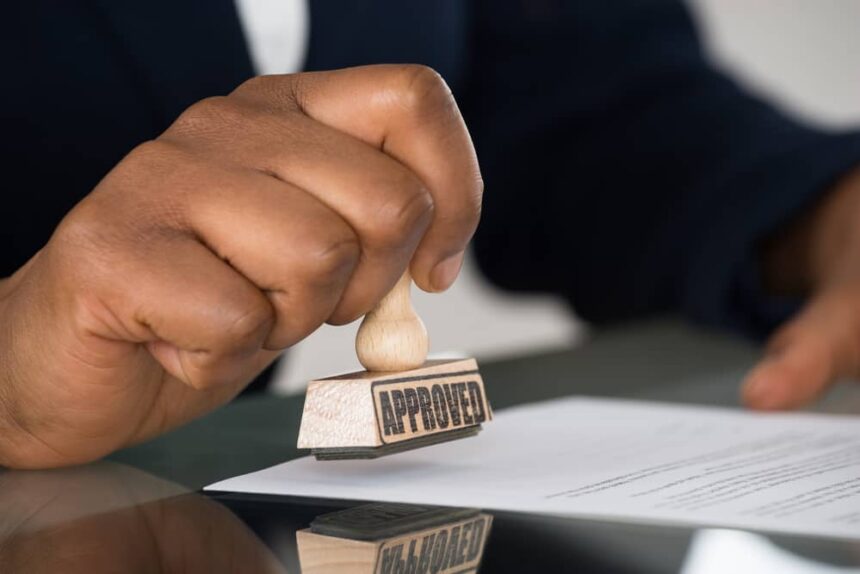Welcome to our comprehensive step-by-step manual on how to secure a GST refund. As a business owner or individual taxpayer, it is crucial to understand the process and ensure that you receive the refunds you are entitled to. In this guide, we will provide you with a friendly approach to navigate the complex world of GST refunds, helping you save time and money.
I. Understand the Basics of GST Refunds:
GST, or Goods and Services Tax, is a consumption tax imposed on the supply of goods and services in many countries around the world. It is designed to be a tax only on the value added to a product or service, ensuring that the burden of taxation falls on the final consumer. In some cases, businesses or individuals may be eligible for a refund of the GST paid on their purchases or expenses.
To determine if you are entitled to a refund, it is essential to understand when and why a refund may be necessary. Generally, GST refunds are available for exports, zero-rated supplies, and certain other specific circumstances. The refund application process may vary depending on your jurisdiction, so it is crucial to familiarize yourself with the specific rules and regulations in your country.
II. Gather Required Documentation:
Before applying for a GST refund, you need to gather the necessary documentation to support your claim. This documentation typically includes invoices, receipts, and proof of export or zero-rated supplies. It is essential to keep these documents organized and easily accessible, as they will be required during the application process. Consider implementing a system or software to keep track of all relevant paperwork, making it easier to compile the required documentation when the time comes.
III. Determine Eligibility Criteria:
To ensure that you are eligible for a GST refund, it is important to familiarize yourself with the specific eligibility criteria set by your local tax authority. In general, businesses engaged in export activities or zero-rated supplies are eligible for GST refunds. However, there may be additional conditions or requirements that need to be met, such as a minimum threshold for refund claims or specific time limits for submission. By understanding these criteria in advance, you can ensure that you meet all the necessary requirements.
IV. Step-by-Step Guide to Applying for a GST Refund:
1. Research and Familiarize Yourself with Local Regulations:
Before starting the application process, it is vital to research and familiarize yourself with the local regulations governing GST refunds. Each country or jurisdiction may have its own set of rules and procedures, so it is essential to access reliable resources or links provided by your local tax authority. By having a clear understanding of the regulations, you can avoid potential mistakes or delays in the application process.
2. Complete the Application Form:
Once you have gained a thorough understanding of the regulations, it is time to complete the GST refund application form. The application form is a crucial document that needs to be filled out accurately and completely. It typically requires you to provide information about your business or personal details, the nature of your supplies, and the amount of GST being claimed. It is important to take your time and fill out each section carefully, ensuring that all information provided is accurate and up to date.
To assist you in completing the form, let’s break down each section and provide explanations and examples:
– Section 1: Personal or Business Information:
Provide your personal or business details, including your name, address, tax identification number, and contact information. If applicable, include your business registration number or any other relevant identifiers.
– Section 2: Nature of Supplies:
Specify the nature of the supplies for which you are claiming a GST refund. This section requires you to classify your supplies based on the applicable tax codes provided by the tax authority. Ensure that you select the correct tax codes to avoid any discrepancies or rejections.
– Section 3: Amount of GST Being Claimed:
In this section, you need to provide the total amount of GST being claimed. Calculate the amount accurately based on the invoices, receipts, or other supporting documents for the eligible supplies. Double-check your calculations to ensure accuracy.
– Section 4: Declaration:
Read and understand the declaration section carefully before signing. By signing the declaration, you are confirming the accuracy of the information provided and acknowledging the consequences of any false statements or misrepresentations. Sign and date the form to complete the application.
3. Compile Supporting Documents:
Along with the completed application form, you need to compile and attach the required supporting documents. These documents serve as evidence to support your claim for a GST refund. The specific documents may vary depending on the nature of your supplies, but common examples include invoices, receipts, export documents, proof of payment, and any other relevant paperwork. It is important to ensure that all documents are in order and meet any specific criteria set by the tax authority.
To ensure a smooth application process, consider following these tips:
– Organize your documents: Keep all relevant documents in a designated folder or file, making it easier to locate and compile them when needed.
– Make copies: Create copies of all original documents as a backup in case of loss or damage.
– Validate document requirements: Review the specific document requirements set by the tax authority. Ensure that each document meets the necessary criteria, such as legibility, completeness, and accuracy.
– Translate if necessary: If any of your supporting documents are in a language other than the official language of your country, consider getting them translated by a certified translator. This will facilitate the review process and minimize potential delays.
4. Submitting Your Application:
After completing the application form and compiling all the required supporting documents, it is time to submit your application. The submission process may vary depending on your jurisdiction. Some countries have online portals where you can submit your application electronically, while others require physical submission through mail or in-person at designated tax offices. Ensure that you follow the specific submission guidelines provided by your local tax authority.
To ensure a smooth submission, consider the following tips:
– Review your application: Before submitting, review your application form and supporting documents to ensure accuracy and completeness. Double-check that all required fields are filled out, all supporting documents are attached, and all calculations are correct.
– Keep a copy: Make a copy of the entire application package for your records. This will serve as proof of submission and can be used for reference in case of any issues or disputes.
– Track your submission: If available, use any tracking services provided by the tax authority to monitor your application’s progress. This will allow you to stay updated on the status of your refund and take any necessary follow-up actions promptly.
V. Follow-Up and Tracking Progress:
After submitting your application, it is important to stay updated on the progress of your refund. Most tax authorities provide online portals or helpline services where you can track the status of your application. It is advisable to regularly check these resources to ensure that your application is being processed and to address any potential delays or issues promptly.
If there are significant delays or issues with your application, consider taking the following steps:
– Contact the tax authority: If you have not received any updates or if there are significant delays in processing your application, contact the tax authority through their designated helpline or inquiry channels. Provide them with your application details and ask for an update on the status of your refund.
– Seek professional advice: If you are facing complex issues or if there are ongoing delays that cannot be resolved through regular channels, consider seeking professional advice from a tax consultant or accountant. They can provide guidance and assistance in navigating the process and resolving any outstanding issues.
VI. Troubleshooting Common Issues:
During the GST refund process, you may encounter common challenges or mistakes that can hinder the success of your application. Here are some practical solutions or workarounds to address these issues:
– Incomplete or inaccurate documentation: Ensure that all supporting documents are complete, accurate, and meet the specific requirements set by the tax authority. If any documents are missing or incomplete, provide the necessary information or obtain the required documents before submitting your application.
– Discrepancies in tax codes: Double-check the tax codes used for classifying your supplies. Ensure that you have used the correct codes and that they align with the tax authority’s guidelines. Discrepancies in tax codes can lead to delays or rejections.
– Incorrect calculations: Verify all calculations made on the application form and supporting documents. Errors in calculating the amount of GST being claimed can lead to delays or rejections. Double-check your calculations to ensure accuracy.
– Missing deadlines: Be mindful of any deadlines or time limits set by the tax authority. Missing these deadlines can result in the rejection of your application. Keep track of important dates and submit your application well in advance to avoid any issues.
VII. Additional Tips and Best Practices:
To enhance the chances of a successful GST refund, consider the following additional tips and best practices:
– Stay updated on changes: Keep yourself informed about any changes or updates in the GST refund process. Tax regulations can evolve, and staying updated will help you navigate the process effectively.
– Maintain proper records: Establish a record-keeping system to ensure that all relevant documents are organized, accessible, and retained for the required period. This will facilitate any future audits or inquiries.
– Seek professional advice if needed: If you are unsure about any aspect of the GST refund process or encounter complex issues, consider seeking professional advice from a tax consultant or accountant. They can provide personalized guidance based on your specific circumstances.
Conclusion:
Congratulations! You have reached the end of our comprehensive step-by-step manual on securing a GST refund. By understanding the basics of GST refunds, gathering the required documentation, determining eligibility criteria, and following our detailed guide, you are now equipped to navigate the process with confidence. Remember to adapt the information provided to your specific local regulations and guidelines. We encourage you to take action and successfully claim the GST refunds you are entitled to.




